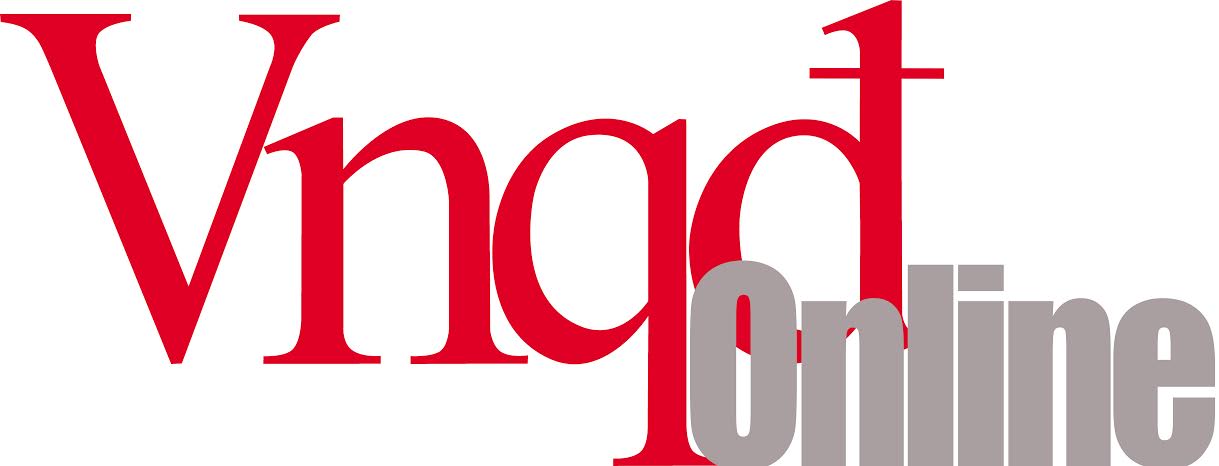 - The problem of fake paintings was first known to the public right after the advent of Doi moi (Renewal). At present, the problem has yet to be solved; on the contrary, it stitll exists and exists in a more public and widespread manner, causing unconfortable feelings to painters and painting-lovers. Van nghe quan doi Magazine would like to present an interview with Painter Pham Ha Hai, the one to wage the campaign calling for transparency in the fine art market of Vietnam.
- The problem of fake paintings was first known to the public right after the advent of Doi moi (Renewal). At present, the problem has yet to be solved; on the contrary, it stitll exists and exists in a more public and widespread manner, causing unconfortable feelings to painters and painting-lovers. Van nghe quan doi Magazine would like to present an interview with Painter Pham Ha Hai, the one to wage the campaign calling for transparency in the fine art market of Vietnam. 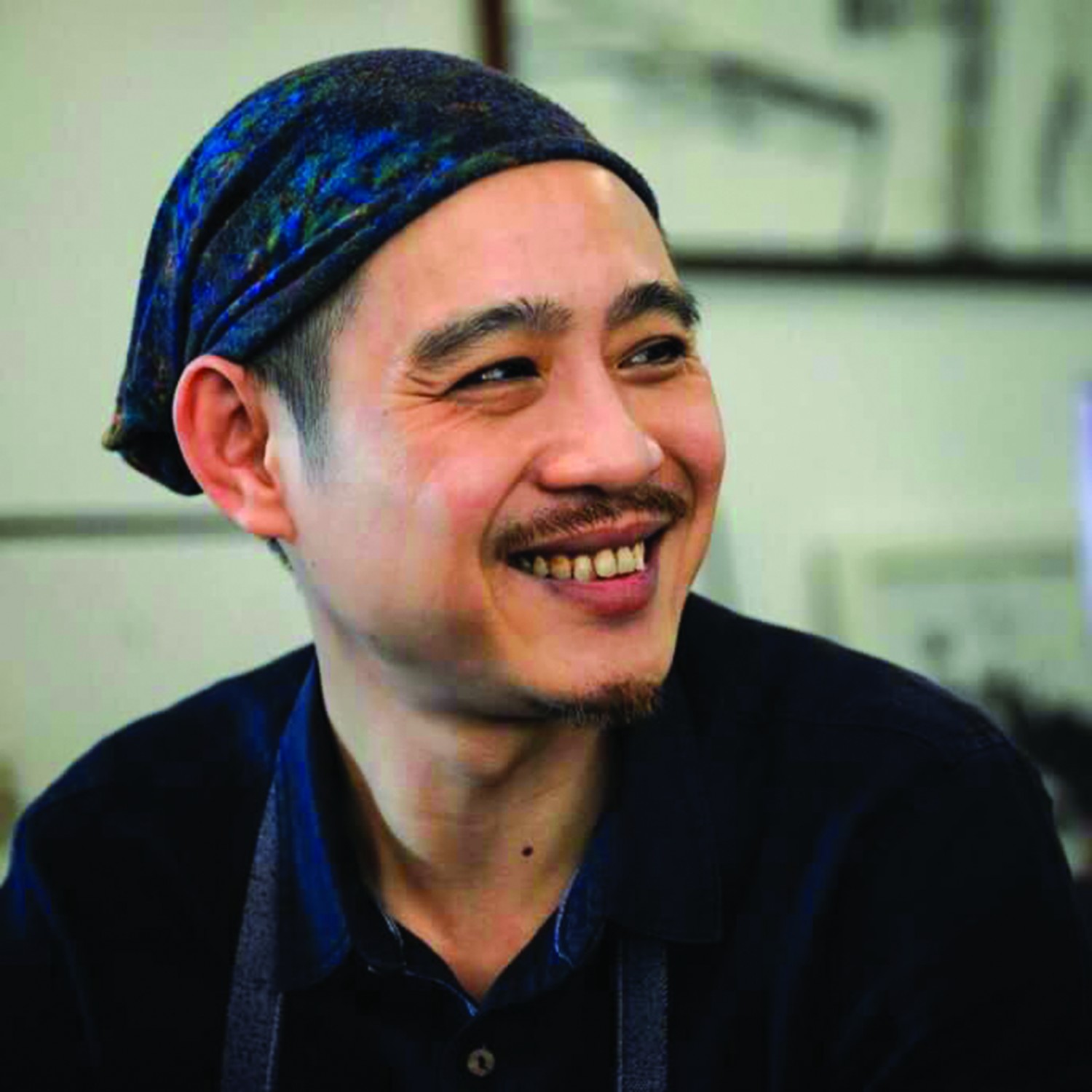 |
Journalist: Painter Pham Ha Hai, as you know, I am not working in the fine art sector, but I like the art of painting. Does it make any problem to this conversation?
Painter Pham Ha Hai: Nice talking with you! Painting is always open to the public for exchange of opinions. You like painting, yes? Then we’ll talk about painting, for I like it most when I have chance to talk about the thing I love.
Journalist: Thanks! I think the conversation’s gonna be easier now. Compared to other types of art such as literature, music, cinematology, do you see any difference from painting in terms of perception?
Painter Pham Ha Hai: Taking me for example, before becoming a painter, and even now, I’ve always been an admirer of all works of other painters.
For any particular field, I see that there is much to say about it. Each type of art has its own special features; however, it is easier for those who work in the art circle to reach real happiness. They are capable of analyzing and perceiving multi-layers of that happiness. For me, it is the most precious as I could perceive the art of painting in this life.
How long the road to perception depends on each individual. This person may have it as the shape of a bottle, while another has it as a bowl. It is obvious that pouring water into the bottle is harder than in the bowl. However, a funnel will make it easier for the pouring. Life is so much immense and interesting! So is painting! There are a lot in this world and how we perceive the world depends on each of us.
For artists, personal creativeness goes together with their perception and serious practice of art. For the public, the perception of painting takes much less time as people just have to take a look at the paintings (reading or listening costs more time). Then, the public will know who you are according to the paintings you collect.
Journalist: From the story of perception, I keep thinking about the fact that there are different painting styles and each painter chooses for himself/herself one specific style. However, not all styles could be easily accepted and appreciated by the public. Does it bring you any difficulties?
Painter Pham Ha Hai: Perhaps, I always choose what is difficult. We were trained methodically with knowledge of the world and Vietnamese fine art. We also underwent practice during training, not to mention those days of childhood when we learnt how to draw before how to write. That firm foundation helps me quite confident with my capacity of rendering reality and depicting shapes and figures. However, right in my last year at university (in mid-1990), we started to take up the method of painting without focusing on the conformation that the eyes see. I want to express what is going on inside me when seeing things in the outside world. Obviously, what I want requires me to take in the outside world to form and build the world of my own.
Artists – Works – Public are components of the world of art. Those factors reflect the happiness and civilization indices. As mentioned above, when I began to refuse to recreate the available natural figures and form, simplify, dissolve and restructure things in my own way of thinking, I knew that I’ve chosen a garden of my own, very quiet! Event for the “white color period” (the period when the painter use more white color) at present, I produce works with not only minimum colors or a single color, but also with “no color.” It is rather weird, isn’t it? But I like that and I will follow this path as I chose and have embarked on it for 20 years now.
A one-way narrow road bears in it both the good and the bad features. However, it doesn’t matter if we love our paths. I have my folks (populace). They are very sensitive and strict, but have real passion for fine art. Quite a few of them are successful in different areas and leading an international and high-standard life and even have time for learning painting. I feel moved the most when my senior colleagues, painters who learned painting with me, and my colleagues buy, collect and display my paintings. That those who live around me pay attention to and send me their straightforward comments on my paintings and things happening around me when I am doing the painting has formed the need to have paintings around them. They are my wife, my children, my neighbors, my house helpers. They are my nearest populace, watching me live and work everyday, seeing the paintings taking shapes and how they change and how they are completed and seeing the beauty that I bring to life. When I feel happy with all that, all those obvious difficulties don’t matter much. For me, there are no more difficulties then! 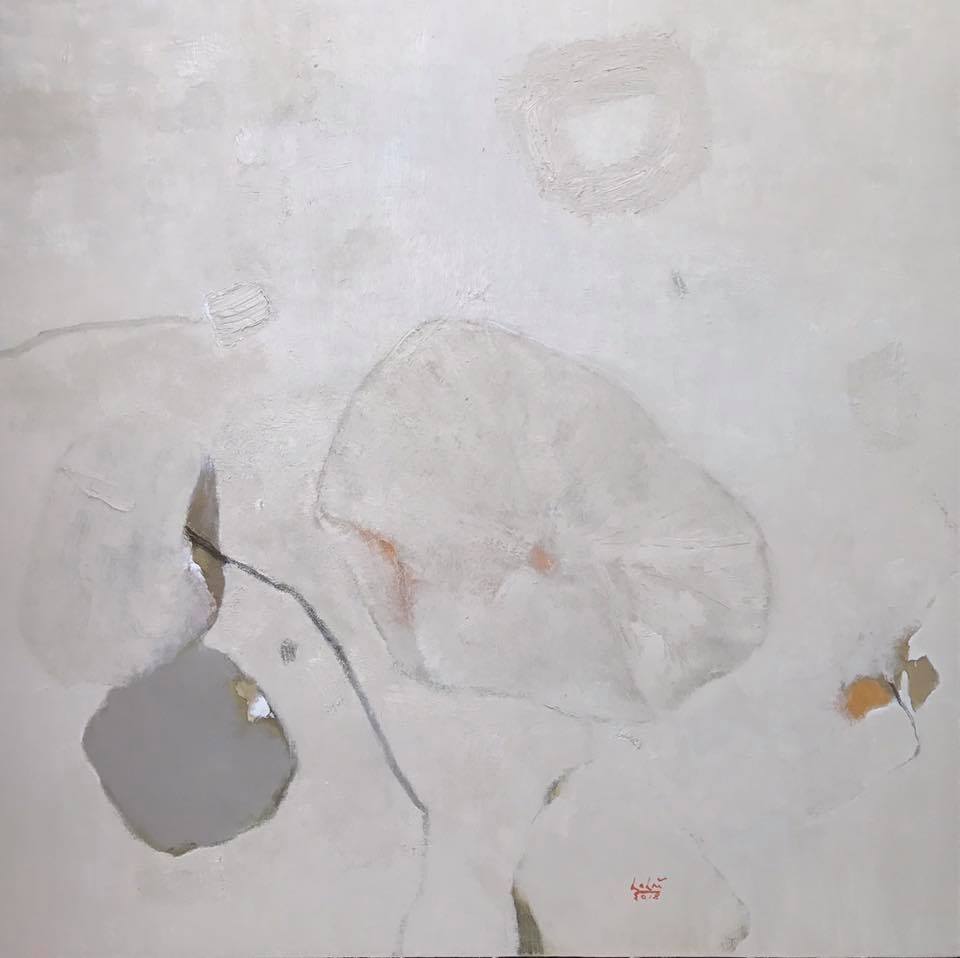
Painter Pham Ha Hai: This problem resulted form economic interests. In Vietnam now, there hasn’t been any reason other than economic one. It has existed for a long time and in a brazen manner thanks to the inactiveness of the responsible authorities and legal bodies.
Reporter: The problem of fake painting in Vietnam has brought an immediate consequence: The loss of prestige of Vietnam’s fine art sector in the international market, making it hard for Vietnamese painters to sell their paintings and creating a bad look for Vietnam. What has the artist circle done to solve this problem?
Painter Pham Ha Hai: We, the painters, are well aware of this problem and know that we have to act by denouncing it in both words and documents, showing the public the tricks of those who create fake paintings and assess the harms to the fine art sector in general and call on press agencies to help spread the message to the community and responsible authorities so that they understand the problem and lend a hand in making the fine art sector transparent. It should be identified as a pressing, comprehensive and long-term call for the engagement of the whole society.
Reporter: In other countries, they deviced painting copy law and those who copy paintings have to pay. I read an article in which foreigners mention the problem of fake paintings in Vietnam with astonishment. They ask, “Don’t you have a cultural police force in Vietnam?” I also know that derivative works are mentioned in the intellectual law, but is it true that it is not applicable in practice in Vietnam?
Painter Pham Ha Hai: As we know, the problem is also listed in legal documents of Vietnam, including explanation, regulation, and subjects. However, I believe that there should be amendments to make it clearer with more details, especially for penalties and the formation of a capable inter-sectoral body to combat this problem.
Producing derivative works that you’ve mentioned is one of the composing methods based on available works. The artists who use this method have to confirm and prove that the artistic values that he himself proposes are new and do not violate the values of the available works. Vietnam has signed the International Convention on Protection of Intellectual Property Rights; therefore, there are no barriers for creativity and penalties applied in accordance with law. 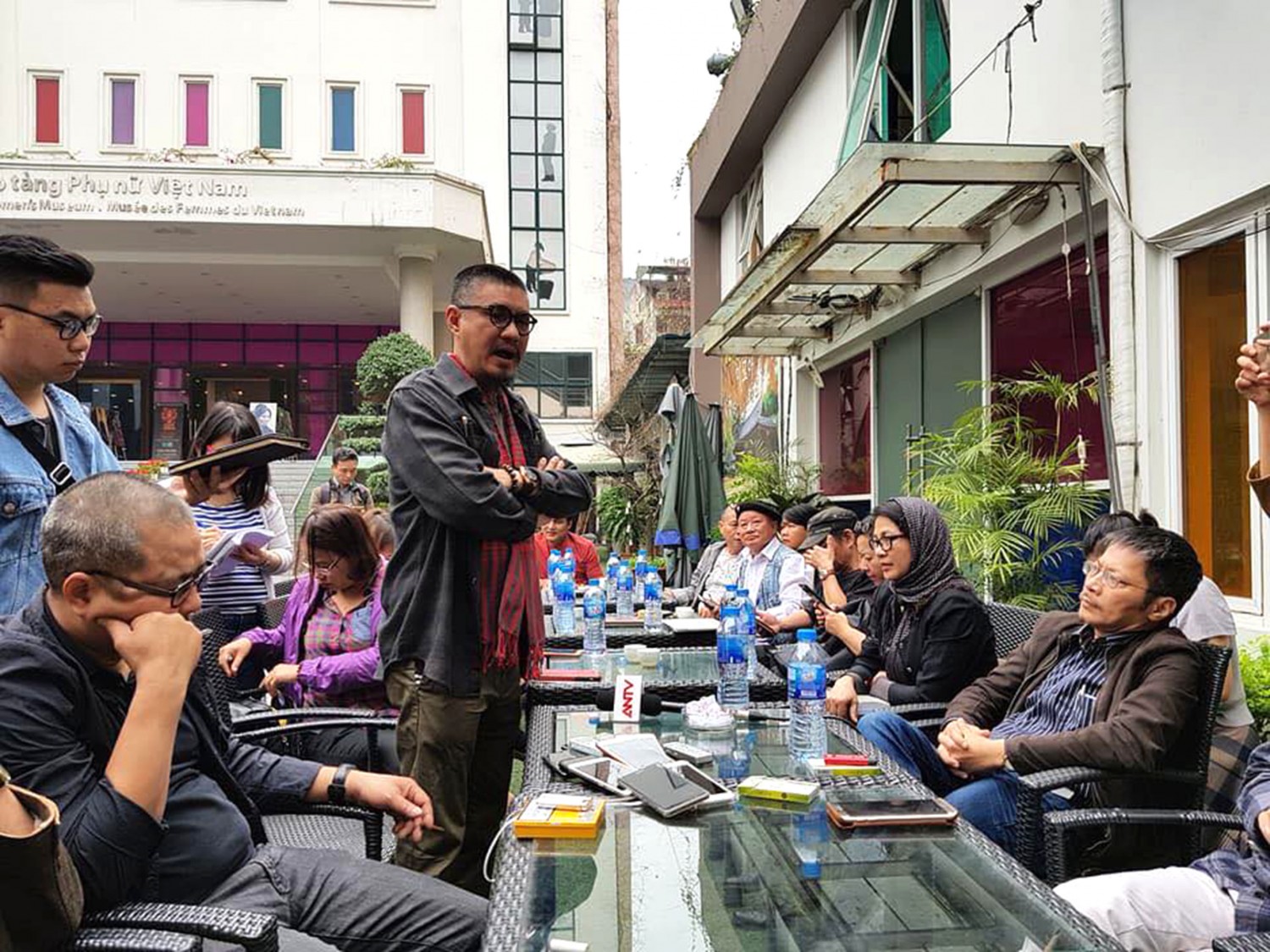
Painters in a discussion on the problem of fake paintings held in late March 2018.
Reporter: Fake paintings were copied in a way that makes them look like real. Is it true that the techniques of the copiers may be… equal to the authentic painters? Does it mean that some painters have engaged in this problem?
Painter Pham Ha Hai: Perfect copying that makes copied paintings look like real could be possible. In terms of the level of depiction, we may say that the copiers are equal to the authentic painters. However, they are just capable of copying the techniques. Never could they copy the emotions and the thoughts of authentic painters. Advanced researchers with deep understanding of the styles and the souls of authentic painters will find the differences between the fake and the real paintings.
The copying of paintings is now done by people, who are in the fine art circle themselves.
Reporter: I still remember efforts of Painer Thanh Chuong in the case of “the Paintings returning from Europe.” And I remember him shaking his head in pains when the case didn’t capture any attention of responsible bodies though the paintings were fake for sure. When you, painters, waged the movement calling for transparency in the fine art market (without any responsible bodies), I remember there were painters voicing their passiveness and lack of belief in the struggle. Does it mean that even painters have yet to reach their common voice, or is struggle conducted just reluctantly?
Painter Pham Ha Hai: Painters only want to and should do their best at his work, which is creation. It is a huge waste when we have to type complaint documents, send them to the authorities and wait… Our job is painting! Reluctantly we have to do that and join hands to bring back the healthy environment to the art of painting.
It’s hard to have the consent of all people. Some of them know well the problem, but they keep silent, for they are afraid of confrontation or just don’t care… However, on my Facebook page, painters discussed fiercely and I saw that there has been improvement in the way of thinking and attitude of individuals, encouraging each other and heading for transparency. The campaign is not easy to implement and must be carried out in the long terms, I think. The same to water, food, healthcare and education, we need the same safe and healthy environment for fine art. My goal is to wage the campaign and expand it.
Reporter: I have seen a glorious fine art sector. How proud of it we are! Could we accept now the distortion of the same fine art sector? I think most of you, painters, do not content yourselves with that fact, but how and where should we begin? The solution is for sure not to wage the campaign and leave it there undone, am I right?
Painter Pham Ha Hai: Vietnam’s fine art includes two schools: folk fine art and modern fine art. It is the pride for us all. Vietnam’s fine art works have been recognized and displayed at museums in the region. Recently, modern paintings of Vietnam have found their way to international autions.
We have our firm foundation, historical values and national identity; therefore, the problem that distorts the picture of Vietnam’s fine art sector is like one rotten apple that spoils the whole barrel. We should stand up and fight against it, push it back for transparency. First and foremost, all individual painters must keep their documentation of their paintings at best.
In March 218, an online fine art work trading floor came into being. The trading floor allows painters to introduce and authorize the floor to list their works for transactions with transparent and sufficient public information. The painters also perform their tax duties. This is one of the concrete acts contributing to making the fine art market of Vietnam transparent.
Reporter: Are there any agencies in charge of dealing with this problem? Or does the fine art sector have to form such an agency?
Painter Pham Ha Hai: First of all, we have to identify a case within a particular area and collect evidence before sending petitions to responsible bodies. However, in the immediate term, the Cultural Inspectorate should be the one to grasp the situation and information of each case.
Reporter: There must be laws applied to those cases in the painting area. There are already laws on property rights in the music and literature sectors. Why haven’t we had the law on fine art?
Painter Pham Ha Hai: Our laws when introduced to life often face the two factors of overlapping and indifference. There should be a call on the whole society to implement the protection of fine art property rights, serving as the basis for painters to register their rights and enjoy legal support when their rights are violated or conflicts of interests occur.
Reporter: The public is also the victim of the fake painting problem. In fact, it is ironic that most of them accept it. That is because authentic paintings are high quality products, including both material and spiritual values; therefore, they accept to buy fake paintings at cheaper prices and enjoy the paintings in their popular manner. This is the thing that is hard to avoid. How do you think about that?
Painter Pham Ha Hai: First, we must make it clear that the problem of fake paintings is wrong and must be denounced, condemned and eliminated. Copying paintings are another story. If regulations are strictly followed, copied paintings could be introduced to the market, as this helps meet the diverse need of the society.
You are where you live and how you live! Love for fine art is good and deserves respect! Depending on households’ economic conditions, people may choose for them what are suitable and what they like. The first and foremost value of paintings is that they are authentic; they are real works of painters, bearing in them the real emotions of painters. They are sometimes not too costly compared to other things for household use, such as a television worth serveral million VND (several hundred, up to a thousand USD or more), which may last for only several years. For the same sum of money, people may come to talk with a painter and buy a painting, which lasts for much longer with higher value.
Those who buy and collect paintings should make clear the difference between the values of authentic paintings and their prices, asking for precise information related to the paintings and even searching for information about whether there are conflicts related to the paintings or not.
Reporter: Researcher and Painter Phan Cam Thuong has said for more than once that high tax rates imposed on art products, such as paintings, is a way to undermine the level of art appreciation of the public. Is it also the chance for fake paintings to develop?
Painter Pham Ha Hai: To encourage and develop domestic fine art market, taxation is a magical wand. There should be exemption of personal and corporate taxes on those who buy paintings as presents. As for ordinary transactions, low tax rates should be imposed for stimulation. Those are things that other countries have implemented.
Reporter: You once said that you want to paint and depict things by a system of signs. This makes me think that if all painters made special and unique things like that, then there would be less room for fake paintings. Am I right?
Painter Pham Ha Hai: If they wish, they can still make fake paintings. However, paintings depicting emotions are harder to copy and when the authentic and the fake are displayed next to each other, it is easier to find down the differences.
The better way is that painters should clarify their creative thinking and keeps good documentation of their works. They should be well aware of registering their property rights and ready to fight for themselves when their rights are infringed. 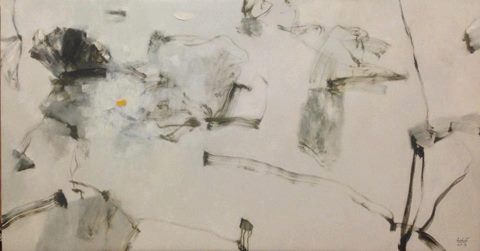
Reporter: So, the problem of fake paintings must be solved and awareness of all related parties should be heightened. Authentic exhibitions display works of well-known painters, but the entertainment is for people of all walks of life. Is it too hard to do?
Painter Pham Ha Hai: Certainly it is not and it comes from the nature of the art. Professional, high-quality exhibitions should be organized. The more that better! The go-betweens, such as middlemen, galleries, museums, etc., must strictly follow regulations in line with law and fulfill their tax duties.
The public should enjoy the most beautiful things and we should remember to “never underestimate the public!”
Reporter: Thank you very much for your time!
Reported by Nguyen Thi Kim Nhung
Translated by Huu Duong